
Telemarketer Fraud
If you hate telemarketers, you’re not alone. Legal Beagle reported that in 2017, Bank my Cell conducted a survey that revealed that out of 1,200 people, 75% of them actively avoided calls that they knew were from telemarketers. 85% of the people who responded to the survey reported that even the thought of dealing with telemarketers triggered anxiety-related issues.
The reason most of us loathe dealing with telemarketers is that the calls are time-consuming and the person on the other end of the line keeps pushing even though we’ve told them no several times. Most of us also hate feeling guilty when we have no option but to hang up on the irritating telemarketer.
It turns out, there’s another reason to avoid telemarketers. That reason is telemarketing fraud.
Cornell Law School defines telemarketing fraud as: “Phone and telemarketing fraud refers to any type of scheme in which a criminal communicates with the potential victim via the telephone. Because many reputable companies use telemarketing to conduct business, criminals can often effectively use the method as a way to obtain a victim’s credit card information or identity and then use this information to make unauthorized purchases elsewhere. Victims have difficulty distinguishing between reputable telemarketers and scam artists. Frequent victims of telemarketing scams include the poor, the elderly, and immigrants without strong English skills.”
Examples of common telemarketing fraud include:
- Selling a fake product via the telephone
- Telling you that for a seemingly nominal amount of money, you’re eligible for a free product/service/trip that the telemarketer has no intention of giving you
- Fake debt collection calls
Telemarketing fraud is illegal in California. Cases involving telemarketing fraud are covered by California’s general larceny statutes which are defined in California Penal Code Sections 484-490.
In California, if the amount of money/good gained through a telemarketing fraud case is less than $900, it’s considered a petty theft case. Sentencing can include six months in jail and a large fine.
If the telemarketing fraud case involves damages greater than $900, the accused will face felony charges. If convicted, they could be sentenced to a full year in prison, charged up to $10,000 in fines, and ordered to pay restitution to the victims.
One of the biggest challenges connected to telemarketing fraud is that many of the cases happen in different states or even different countries, which makes pursuing legal action difficult.
The best way to avoid becoming a victim of telemarketing fraud is not agreeing to any offers or providing any financial information until you’ve had a chance to thoroughly research the offer/business.

The Legal Ins and Outs of Catfishing
Catfishing isn’t the art of catching the bottom-dwelling fish that taste greatly fried. Catfishing actually refers to the act of using a false social network profile that allows you to pretend to be someone you’re not. This differs from a ghostwriter creating an account for their writing profile because the catfisher’s account exists purely for malicious purposes.
Each catfisher has their own reasons for creating the fake profile, some use the account to extort financial information, some use it for bullying purposes, some like to get compromising photos of their victims. The end result is that the catfisher almost leaves victims in their wake.
While it seems like catfishing should be considered fraud and illegal, at this point, there are no actual laws pertaining to the actual act of catfishing. But, in many cases, the catfisher uses their fake social media identity for some sort of illegal activity. In many cases, the catfisher knows that they’re engaged in illegal activity but assumes that since they’re using a fake profile, they won’t get caught. Catfishers also hope that their victims will be so embarrassed that they were taken in by the fake profile that they won’t even report the crimes. Another challenge victims who do report the crime face is that the catfisher may live in a different state, making it difficult to pursue legal action.
Examples of laws catfishers commonly break include:
- Copyright fraud
- Computer hacking crimes
- Fraud (uses false pretenses to gain money/goods/services)
- Identity theft
- Soliciting minors
- Illegally recording or photographing someone without their consent
A catfisher can destroy your life so it’s important to know the steps you can take to avoid interacting with a catfisher.
If you’re contacted via social media by someone you don’t know, spend some time checking them out before you respond to their friend request or personal message. See if they have anything in common with you such as a mutual friend or shared interest. Explore their own profile and make sure it contains the type of content usually found on a social media account, this includes interactions with other people.
Even if you’re confident this new contact is a legit person, you still need to be very careful about the type of information you provide them. Keep all of your interactions impersonal.
The single best way to avoid falling victim to a catfisher is to pay attention to your instincts. If you get a gut feeling that something isn’t quite right, you should block them from your social media accounts and stop all interactions. In this day and age, it’s better to play it safe than to be sorry.
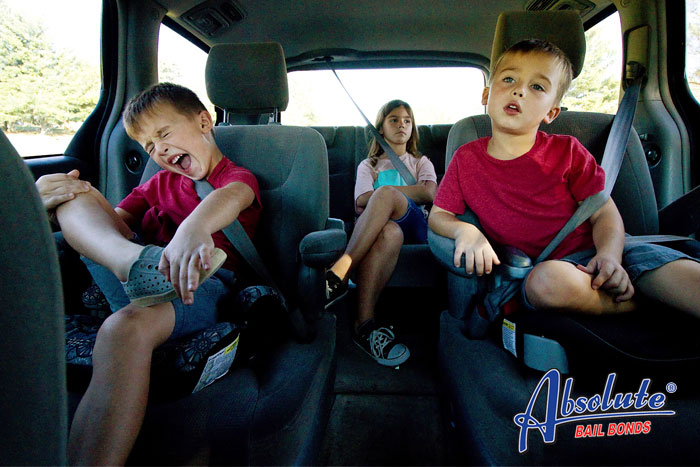
Leaving Kids in Hot Cars in California
Kids and hot cars are never a good combination. Everyone knows that, yet there is still an average of 38 children who die each year after they’re locked into a hot car.
In all fairness, nearly all of these cases are an accident. The child is strapped into their car seat in the back of the vehicle and the driver simply forgets that they’re there until it’s too late. There are even situations when the parent accidentally locked the car keys in the vehicle with the child.
While accidents do happen, children overheating in the car something everyone would like to forget. If you’re traveling with a small child who can’t possibly let themselves out of the car, you need to figure out what steps you can take to make sure they aren’t accidentally forgotten. The hotter it gets, the more you’re going to have to worry.
One of the things that might help you remember that your child is in the backseat of your car is understanding that it’s illegal to leave your child there. California passed Kaitlyn’s Law in 2001. The law was created in memory of Kaitlyn Russel, who was only six months old when she died after her babysitter forgot her in a hot car for over two hours.
Kaitlyn’s Law not only makes it illegal to leave an infant in the car, but it also makes it illegal to leave an infant in the care of anyone who isn’t at least 12 years old if the vehicle is running or there are keys in the ignition and if there are unsafe conditions, such as overheating.
Kaitlyn’s Law makes it illegal to leave your unsupervised infant in the car period. So even if there is no danger of them overheating, you still have to bring them into the store or appointment with you.
Leaving a child under the age of six in a vehicle when they have no supervision can result in a $100 fine. It’s not unusual for the judge to waive the fine after you’ve completed a community education program.
In many cases, leaving a young, unsupervised child in the car, especially on a hot day, will result in you being charged with child endangerment. It is one of California’s wobbler offenses. In felony cases, you could face up to six years in prison. In misdemeanor situations, you could be sentenced to a year in county jail. In both situations, the Child Welfare Service will likely become involved and decide if you should retain custody of your child.
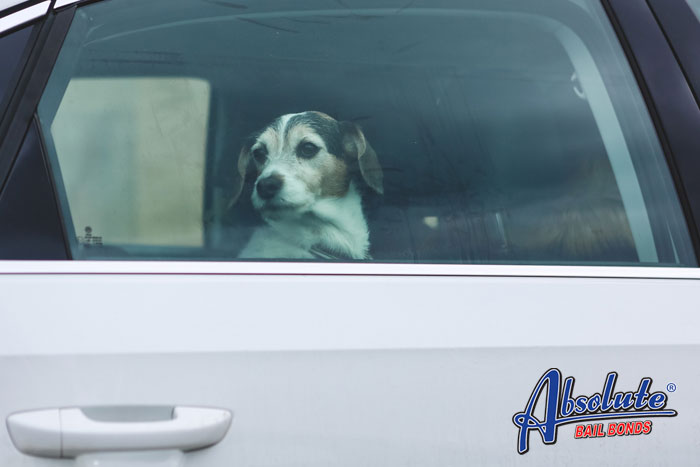
Leaving Pets in Hot Cars in California
Dogs love their owners and want to be with them all the time. In an attempt to keep our dogs happy, many of us take them with us when we run errands. On cold days, this isn’t an issue, but now that we’re on the cusp of summer, it will be a while before Californians experience cool days which means it’s time to rethink taking your dog along on your grocery store runs.
California lawmakers passed laws that make it illegal to leave your pet in your vehicle at any time that there is a chance that they will be hurt before you get back. This includes when the temperatures soar to a point that your vehicle turns into an oven.
This means that even when the outdoor temperature is cool, you can’t leave your dog in the car all day if they don’t have access to fresh food and water. You also can’t leave them in the car if you have items in the vehicle, such a plastic shopping bags or heavy items that could topple.
The heat simply makes things works. The problem in the summertime is that many dog owners think that since they’re only running into the store for a minute or two, their dog will be fine. That’s not the case at all. It doesn’t take long for the car to get extremely hot. As the car heats up, your dog overheats, and heat stroke becomes a real threat. If you don’t return shortly, your dog will overheat to death.
As soon as the temp reaches 70 degrees Fahrenheit, you need to be careful. Studies indicate that on a sunny 70-degree day, the interior of your car can reach 115 degrees in less than 30 minutes. Dogs start to experience heat exhaustion when it gets to 103 degrees.
If it’s warm out and someone spots your dog in the car, they’re legally allowed to break your vehicle’s windows and rescue your pet.
The broken car window will likely be the least of your concerns. If the police get involved, you can be charged with a $100 fine per each animal that was in the car. The amount will be higher if it’s not your first offense. If the pet needs medical attention, the maximum sentence increases to a $500 fine and six months in jail. In many cases, you’ll also face animal cruelty charges.
Now that the temperatures are consistently staying above 70 degrees, it is in your best interest to leave your dog home when you’re running errands.

Can You Get Into Trouble for Using a Computer That Doesn’t Belong to You?
We’ve all done it from time to time. Grabbed a friend or family member’s laptop to check our email or update our social media accounts. Most of us ask for permission first. But what if you don’t ask for permission? What happens if you simply boot up someone else’s computer and start using it.
While each situation is different, in legal terms, if you use someone’s computer without getting their permission first, you can be charged with a crime. You’d be charged with violating Penal Code 502 PC. This law states that:
“It is the intent of the Legislature in enacting this section to expand the degree of protection afforded to individuals, businesses, and governmental agencies from tampering, interference, damage, and unauthorized access to lawfully created computer data and computer systems. The Legislature finds and declares that the proliferation of computer technology has resulted in a concomitant proliferation of computer crime and other forms of unauthorized access to computers, computer systems, and computer data.
The Legislature further finds and declares that protection of the integrity of all types and forms of lawfully created computers, computer systems, and computer data is vital to the protection of the privacy of individuals as well as to the well-being of financial institutions, business concerns, governmental agencies, and others within this state that lawfully utilize those computers, computer systems, and data.”
This means that not only are you not allowed to boot up another person’s computer without their permission, you’re also not allowed to use their computer network or any of their software. You should also be aware that in most situations using another person’s cell phone without their permission would also be covered by the same law.
Most of California’s unauthorized use of a computer cases involve additional charges which frequently include fraud, identity theft, and trespassing.
At this point, unauthorized computer access is one of California’s wobbler laws. The exact circumstances of the situation determine if you face misdemeanor or felony charges.
If you are convicted of misdemeanor unauthorized computer use, the maximum sentence is twelve months in county jail and a fine that doesn’t exceed $5,000. Felony convictions can include a three-year stint in state prison and as much as $10,000. Probation is an option in both felony and misdemeanor cases.
While there are defenses you can use in an unauthorized use of a computer case, putting one together isn’t easy. In order to win, you’ll have to prove that you were actually given permission or that you didn’t realize it wasn’t your computer or cell phone.
The best way to avoid an unauthorized use of computer charge is trying to use your own electronics’ as much as possible.
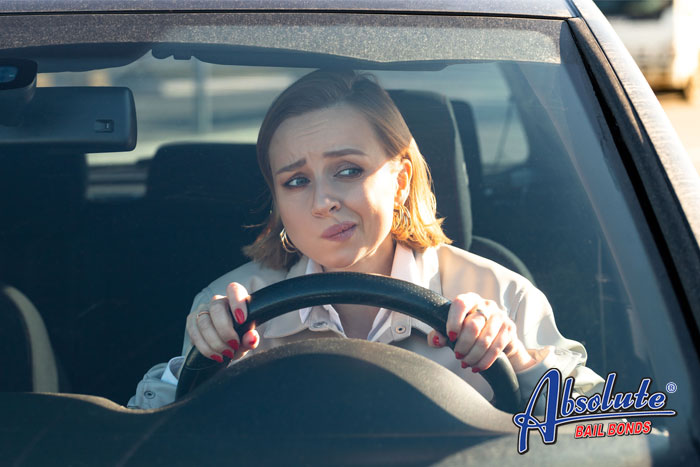
Failing to Properly Register Your Vehicle
To legally operate a car in the State of California, you need a few things. You need a valid driver’s license, you need to have the car properly insured, and the vehicle’s state registration needs to be complete. Both the insurance and registration can be expensive, especially when money is already tight. While most motorists try to scrape up enough to cover their insurance premium, many will look for creative ways to avoid the registration fee.
If you’re looking at the current cost of registering your vehicle and trying to figure out if the expense is worthwhile, you should know that if you don’t, you could face misdemeanor charges.
The issue of fake vehicle registration is addressed in California’s Vehicle Code 4462.5 VC.
If you’re pulled over and your vehicle’s registration is out-of-date, you’ll likely get a ticket for the infraction. You’ll also be ticketed for anything else you’ve done wrong, which could include speeding, failing to yield for a stop sign, or driving without insurance. The officer also has the option to have your vehicle towed to the police impound lot. If the vehicle is towed, you’ll have to pay the towing fees and the impound fee before you can get it back. Most police impound lots charge a daily fee for each day that your car is there.
While all of those fees hurt, your bank balance isn’t done taking a hit. The DMV will also add additional late fees to your total when you do get your car registered, something you’ll likely have to do before the police will release it from impound.
If you try to hide the fact that your vehicle isn’t properly registered by doing things like:
- Putting a different plate on the vehicle
- Presenting a fake registration to the police officer
The situation becomes much worse. Not only will the police tow your vehicle, but you’ll also be charged with false vehicle registration which is a misdemeanor. If you’re convicted you could be sentenced to six months in jail and issued a $1,000 fine. The judge does have the option of using misdemeanor probation instead of jail time for your sentence.
When all is said and done, it’s in your best interest to hitch a ride with friends until you can get your car properly registered.

What is Felony Stalking
While everyone knows that stalking is a crime, few realize that it can be a felony or a misdemeanor and in some cases, the accused might be charged with both a felony and a misdemeanor.
Every single state has stalking laws. While the nuances of stalking laws vary from one state to another, for the most part, each state has the same description of what can be considered stalking. As a rule, any behavior that can be considered prolonged harassment, an obvious attempt to frighten someone, the unwanted monitoring of a person, using proximity to threaten a person, or actions that lead to emotional distress is covered by stalking laws.
Anyone who engages in the following types of behavior will likely be charged and convicted of stalking in California:
- Going out of your way to follow a person
- Frequently showing up at locations where you know a specific person will be
- Using GPS to monitor a person’s movements
- Constantly filming/photographing someone without their permission
- Obsessively monitoring someone’s social media accounts, phone calls/texts, reading their emails, and studying their computer activities
- Going out of your way to gather as much information as you can about a specific person
- Leveling threats against a person or their loved ones (including pets) if they don’t spend time with you
- Instigating property damage
- Sending gifts and other forms of communication after you’ve been told to stop doing so
While it’s true that it can sometimes be difficult to determine when stalking crosses the line from a misdemeanor and becomes a felony, the general rule of thumb is that anything that seems more intense than simple harassment will likely be considered a case of felony stalking.
The exact punishment a person receives following a stalking conviction in California often varies from one case to the next. When handing down a sentence, the judge looks at a variety of factors, including:
- Your criminal history
- The type/intensity of the stalking episodes
- If the victim had a POP order that you ignored
- If anyone was hurt because of your actions
The sentence for a misdemeanor conviction can include spending a maximum of one year in county jail and being required to pay a fine that doesn’t exceed $1,000. In most cases, you’ll also be told that you’re legally required to stay away from your victim and that you’re also not allowed to contact them.
The sentence for a felony stalking conviction in California can include spending three years in state prison. If you have prior stalking convictions on your record, you could be sentenced to five years in prison.
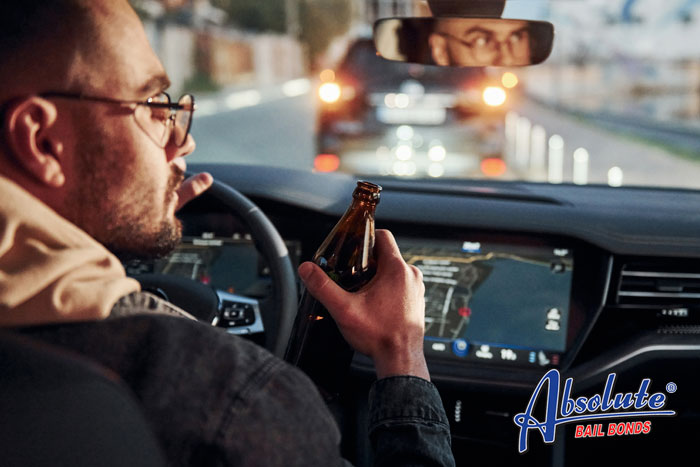
Most Common Crimes in California
The most common crimes in California vary from one county to the next. The stats can also change a great deal. Still, there are some crimes that are more prevalent than others.
Drug Related Crimes
One of the interesting things about drug-related crimes in California is that the legalization of marijuana has reduced the number of drug-related arrests each year. It’s estimated that now that marijuana is legal law enforcement agencies have an additional $200 million that is used to deal with other types of crime.
While legalizing marijuana has reduced the number of drug-related crimes the state deals with annually, drugs still take the biggest toll on California’s legal system.
Violent Crimes
The violent crime rate in California fluctuates. It increased in 2012 and decreased by 2.9% between 2018 and 2019. According to data collected in 2019, 60% of the violent crime arrests were aggravated assault only 1% involved homicides.
DUIs
Despite all the warnings about combining alcohol and driving, DUIs still represent a major crime problem in California. The good news is that people seem to be getting better about not drinking and driving. In 2008, there were 208,845 DUI arrests in the state. In 2013 there were only 155,599 reported DUI arrests.
Weapons Charges
Weapons charges represent a large chunk of California’s crime problem, though there is a wide assortment of charges which range from quite minor to extremely serious. Given the complexity of California’s laws regarding weapons, if you plan on carrying anything that could be considered a weapon it’s in your best interest to spend a great deal of time reading through all of the laws that pertain to that specific weapon. Don’t forget that weapon laws can change from one county to the next.
Property Crimes
A surprising number of property crimes take place each year in California. The good news is that they appear to be decreasing. Two major California cities, Ventura and Fresno reported an impressive 10% decrease in property crimes in 2019.
It will be interesting to see how crime rates change in a post-Covid-19 world.

Domestic Violence in California
Domestic violence is a complex crime so it shouldn’t come as surprise to learn that the laws dealing with domestic violence are equally complicated.
The first step in unraveling this complex system is knowing exactly what domestic violence is. California defines domestic violence as actions that either harm or threaten to harm an intimate partner.
It’s important to understand that there are sub-categories of domestic violence which include:
- Domestic battery (actual physical abuse)
- Domestic assault (the use of words or actions to threaten physical abuse)
It’s not unusual for domestic violence cases to involve both domestic battery and domestic assault.
California law is written in such a way that only a limited number of people can file domestic violence charges. At this point, domestic violence charges can only be filed by:
- Spouses
- Registered domestic partners
- Live-in lovers (also considered a cohabitant)
- Someone who shares a child with the accused
- Fiancées
- Someone who has been in a steady romantic relationship with the accused.
California law states that both current and former domestic partners can file domestic violence charges.
Many people are surprised to learn that domestic violence is one of California’s wobbler crimes. That means it can be charged as either a misdemeanor or felony. When the prosecutor is looking at the case, they consider many variables when deciding if they want to pursue misdemeanor or felony charges.
Considerations include:
- Circumstances surrounding the incident
- How badly the victim was injured
- The accused’s criminal past
- The couple’s history (have there been numerous reports of domestic violence)
If convicted of misdemeanor domestic assault, the accused could spend the next year in county jail. If convicted of felony domestic assault, they could be sentenced to four years in state prison.
The punishment for misdemeanor domestic battery includes a year in county jail and a $2,000 fine.
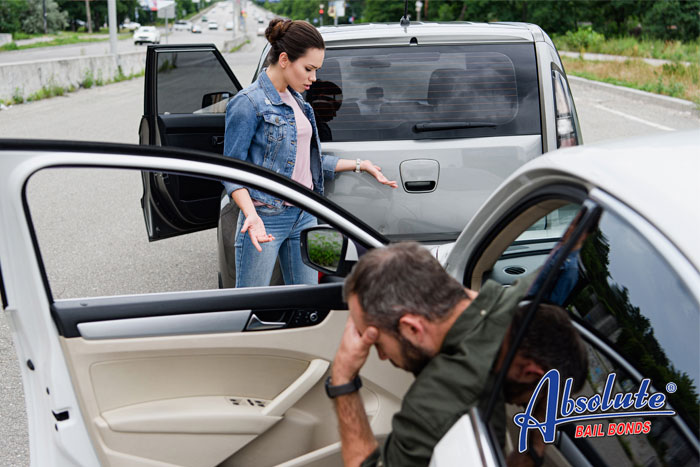
Documenting a Car Accident
If you haven’t been in a car accident yet, you should consider yourself lucky. Considering how much time we spend behind the wheel, the odds are good that sooner or later you’ll be involved in one. Because of the likelihood of getting into a car accident, it’s important to know what the proper protocol is during an accident.
The first thing you need to do is make sure neither you nor anyone else is hurt. If there are injuries, call for medical help and do as much first aid as possible. During this, you should also contact the police.
When there are injuries, dealing with those should always be your first priority. Let the police handle writing up the details of the accident.
If there aren’t any injuries, you should still call the police, but while you’re waiting for them to arrive on the scene, take some time to create your own documentation of the accident. Thanks to the installed camera inside your smartphone this is easier than ever. All you have to do is whip it out and start snapping photos.
Having clear accident scene photos is extremely important. Unlike a police report that can be dismissed by a judge as hearsay, the photos you snap at the accident can be used during a civil trial. Your insurance company might even use them as they try to determine how the accident happened and who is at fault. The photos also help provide proof of who actually witnessed the accident.
When you’re snapping photos, you’ll want to take pictures of both vehicles, anyone who is standing nearby, and the local landscape. Make sure you include shots of road signs, objects that could have helped cause the accidents, intersections, and traffic lights.
As soon as you can, sit down and write your own account of what happened in the moments leading up to the car accident. You should do this even if you believe the accident was your fault. Once you’ve completed writing your own report, save it and the photos you snapped somewhere safe. It’s really in your best interest to store copies in multiple places, such as one set in a cloud storage unit, a few more saved to various email locations, and maybe a hard copy in your filing cabinet.
You need to keep the photos and your account of the accident for a full two years. After two years, California’s statute of limitations for car accidents kicks in and you’ll no longer have to worry about a civil lawsuit.

